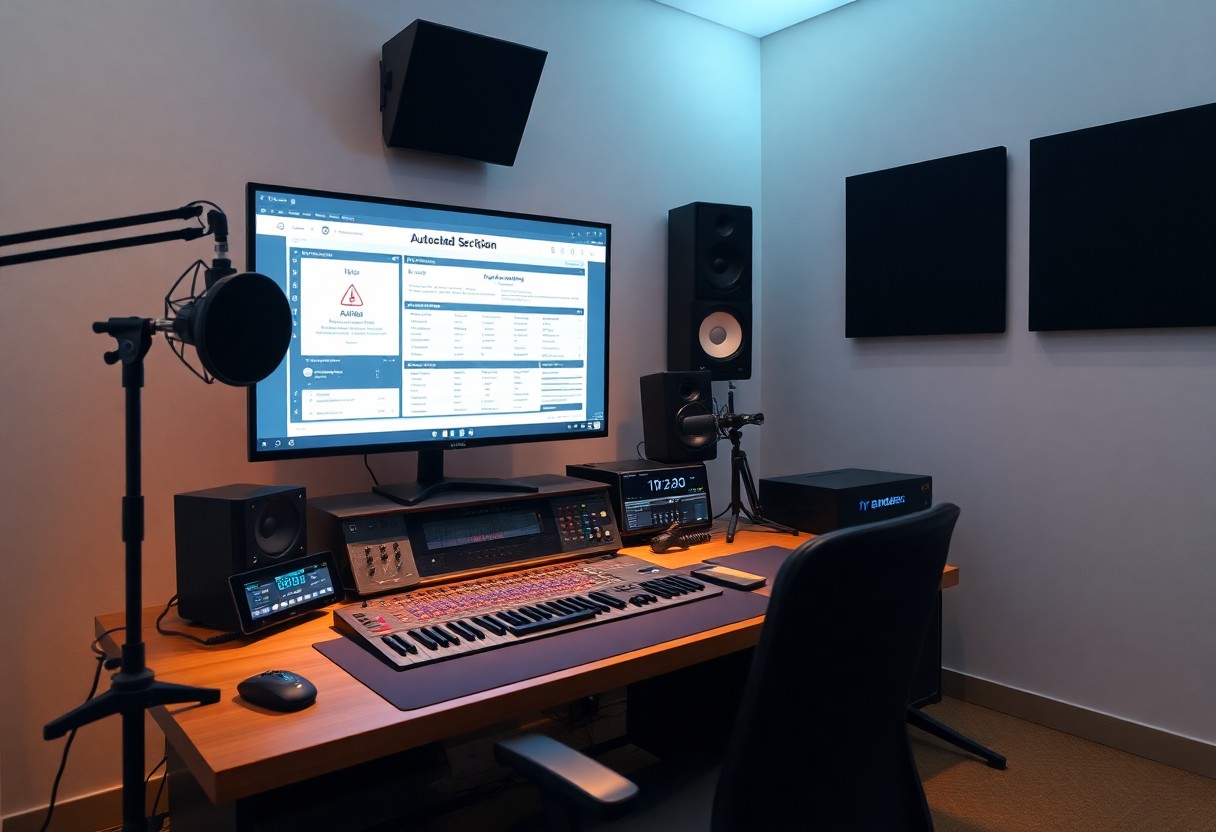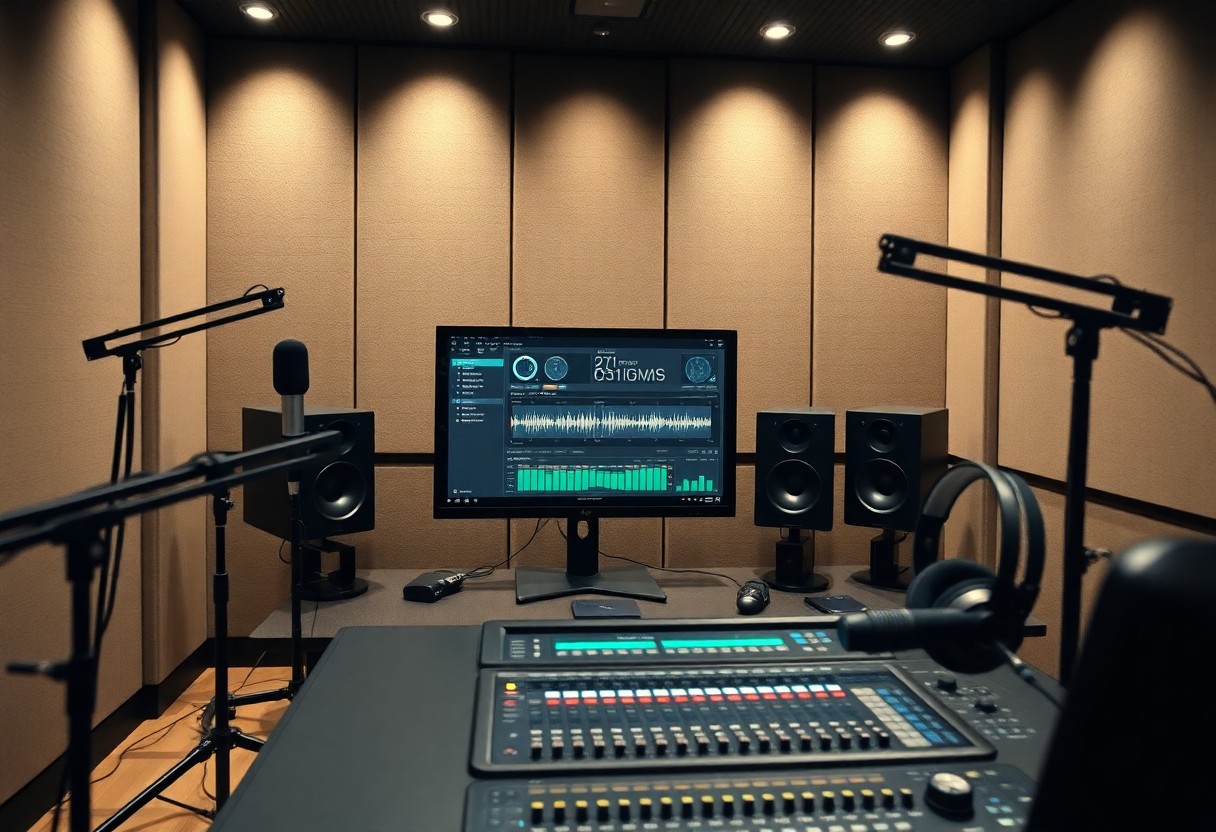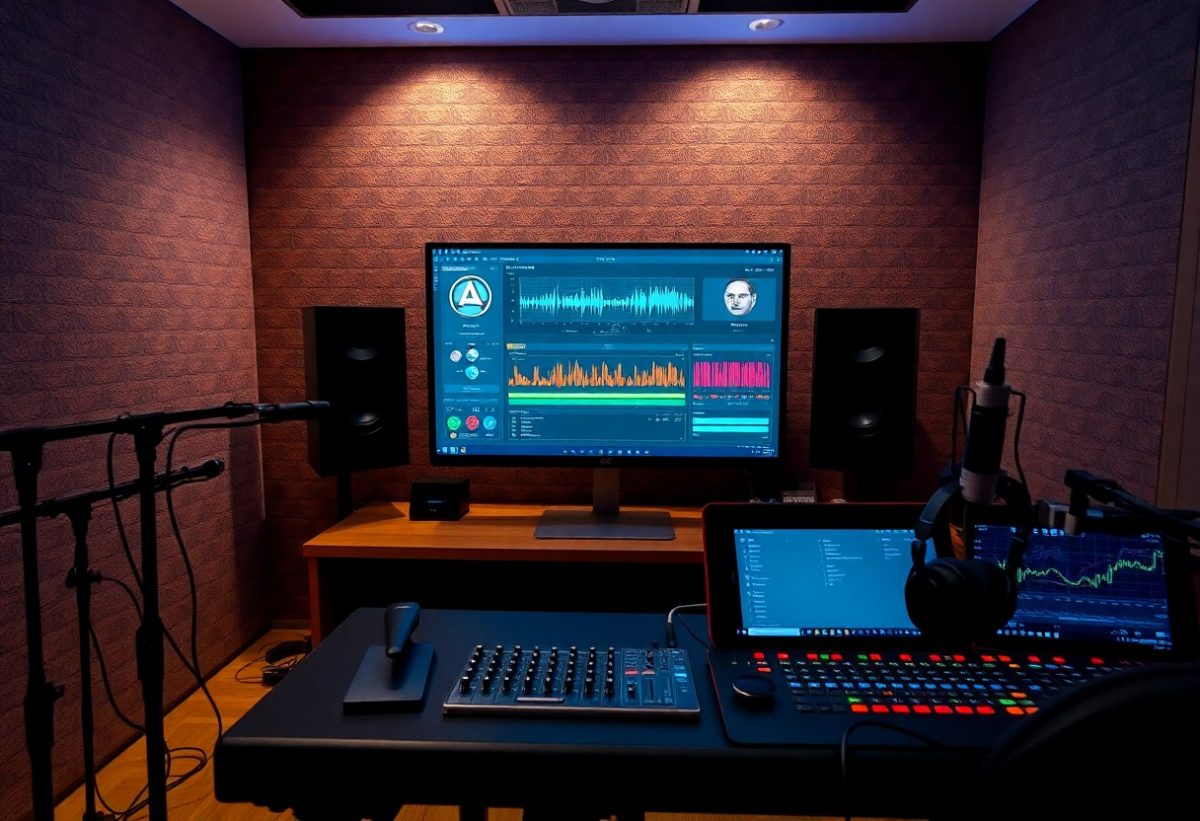Automation in audio production is transforming how you create and share content, making the process faster and more efficient. By leveraging AI technologies, you can streamline voice generation and podcast creation, allowing you to focus more on your message and less on technicalities. This post outlines seven innovative steps to help you harness the power of AI for your audio projects, ensuring that you stay ahead in the evolving landscape of digital media.
Understanding AI in Audio Production
The Rise of AI in Creative Industries
The creative industries have seen a significant transformation with the advent of AI technologies. Artists, musicians, and content creators now leverage AI tools to enhance their workflows, reduce production times, and explore new artistic directions. Platforms like Jukedeck and Amper Music enable you to generate original music with minimal input, allowing for more experimentation and innovation in your projects.
Key Technologies Driving AI Audio Solutions
Several technologies underpin the rise of AI audio solutions, including natural language processing (NLP), machine learning algorithms, and deep learning frameworks. These innovations allow for the automated generation of voiceovers, music, and even sound effects tailored to your specific content needs.
Natural Language Processing (NLP) allows AI systems to understand and generate human-like speech, making it possible for you to create dynamic audio content. Machine learning algorithms analyze vast datasets of audio samples, enabling personalized recommendations for voice and music styles. Deep learning frameworks enhance sound quality and coherence, continually improving AI-generated audio outputs through iterative learning systems. By integrating these technologies, you can streamline your audio production process significantly, resulting in superior output with less manual effort.

Step 1: Automating Script Generation
Natural Language Processing (NLP) for Scriptwriting
NLP technology allows you to generate scripts that structurally align with natural human conversation. By analyzing existing scripts and learning from them, AI models create coherent narratives tailored to your podcast’s topic. Tools like OpenAI’s GPT-3 can help you produce engaging dialogue or informative content in a matter of minutes, streamlining your pre-production process significantly.
Personalization Features for Targeted Content
Leveraging AI-driven user analytics, you can personalize your scripts to resonate with specific audience segments, enhancing engagement and retention. By assessing listener preferences, interests, and behaviors, these tools help craft content that speaks directly to your target demographic.
Personalization goes beyond basic demographics; AI can analyze data such as listening times, feedback, and even social media interactions. By utilizing this information, you can adjust your script tone, subject matter, and length, thereby creating episodes that your audience is more likely to connect with. This targeted approach facilitates deeper relationships with listeners and fosters a loyal community around your content, ultimately driving higher engagement rates and listener satisfaction.

Step 2: Voice Synthesis
The Evolution of Text-to-Speech Technology
Text-to-speech (TTS) technology has transformed from robotic, monotone voices to highly sophisticated, natural-sounding speech. Early systems relied on simple phonetic algorithms, producing a stilted experience. With advancements in machine learning and deep neural networks, modern TTS utilizes vast datasets of human speech, enabling the generation of expressive and contextually aware audio. Notable examples like Google’s WaveNet and Amazon Polly show dramatic improvements, making synthetic voices almost indistinguishable from real ones.
Customizing AI Voices for Brand Identity
Crafting a unique auditory presence is necessary for brand recognition. Customized AI voices can embody your brand’s identity, offering consistency across all audio content. Whether it’s a warm, friendly tone for a wellness brand or an authoritative voice for a financial service, fine-tuning your AI-generated voice ensures alignment with your brand’s values and target audience. This personalization creates a stronger connection with listeners while reinforcing brand recall.
Using tools like Descript and Resemble AI, you can create a tailored voice model based on specific vocal attributes that resonate with your audience. By inputting sample recordings or adjusting pitch, speed, and emotion, you develop an audio signature that encapsulates your brand essence. Consistent use of this customized voice across platforms, from podcasts to advertisements, not only enhances recognition but also fosters trust and loyalty among your audience.
Step 3: Podcast Editing Automation
AI Tools for Audio Cleanup and Enhancement
Utilizing AI tools for audio cleanup significantly enhances your podcast episodes. Solutions like Adobe Audition’s Auto-Ducking and Auphonic intelligently remove background noise, balance sound levels, and enhance vocal clarity. With these tools, you can achieve professional-quality audio without extensive manual effort, allowing you to focus on content creation instead of technical editing.
Incorporating Sound Effects and Music Seamlessly
Integrating sound effects and music into your podcast can elevate listener engagement and create a more immersive experience. AI-driven platforms like Descript and Alitu offer libraries of royalty-free sounds and music, enabling you to effortlessly add layers to your audio. Using AI to analyze context ensures that your audio enhancements complement the dialogue effectively, rather than overpowering it.
AI tools not only streamline the process of finding suitable sound effects and music but also provide intelligent suggestions based on your podcast’s theme and tone. By analyzing the script or previous audio, these systems can recommend specific soundscapes or musical tracks that resonate with your audience. This targeted approach saves time and enhances the overall production quality, creating a more polished and captivating listening experience.
Step 4: Content Distribution and Marketing
Leveraging AI for Targeted Audience Engagement
Utilizing AI for audience engagement allows you to precisely identify and reach your target demographic. With machine learning algorithms, you can analyze user behavior, preferences, and engagement metrics to tailor content that resonates with your audience. A/B testing can optimize your messaging and delivery times, ensuring maximum impact and increased interaction rates, leading to a more engaged community around your podcast or audio content.
Automated Social Media Promotion Strategies
Automated social media strategies enable you to manage your content distribution efficiently. By integrating AI tools into your marketing workflow, you can schedule posts across various platforms, analyze engagement data, and adjust your strategies based on real-time performance insights. This automation eliminates the guesswork in timing and frequency, helping you maintain a consistent online presence without overwhelming your schedule.
For instance, platforms like Buffer and Hootsuite utilize AI to suggest optimal posting times based on your audience’s activity patterns, increasing the likelihood of your content being seen and shared. You can also leverage AI-driven insights to customize content specifically for each social media platform, enhancing engagement. By automating response generation for common queries or comments, you create a seamless interaction that keeps your audience engaged, allowing you to focus on creating quality content.
Step 5: Analytics and Feedback Loop
Utilizing AI for Audience Behavior Analytics
AI-driven analytics platforms track listener engagement and behaviors, offering insights into which segments resonate most with your audience. These tools can analyze metrics like play rates, drop-off points, and audience demographics, allowing you to adapt your content strategy effectively. For instance, if you notice a significant drop-off at a specific moment in your podcast, it signals the need for adjustments in that area to maintain listener interest.
Iterative Improvement of Content Based on Data
Data-driven insights enable you to refine your podcast content continuously, ensuring it aligns with audience preferences. Regularly analyzing listener feedback and engagement metrics helps identify trends, leading to targeted content adjustments. Consider implementing A/B testing for different episode formats or themes, allowing you to explore what creates the most engagement among your audience.
This iterative process involves regularly reviewing analytics, such as episode performance and listener surveys, to fine-tune your future content. For example, if analytics show episodes featuring expert interviews yield higher engagement, you might prioritize these types of content moving forward. Incorporating audience feedback can also lead to new topic ideas that resonate deeply, making your podcast more relevant and enjoyable for listeners while cultivating a loyal community around your brand.
Final Words
To wrap up, embracing AI-powered audio tools can significantly enhance your voice and podcast creation process. By implementing the seven innovative steps discussed, you can streamline production, improve content quality, and engage your audience more effectively. Leveraging these technologies not only saves time but also allows you to focus on creativity and storytelling. As you integrate these steps into your workflow, you’ll unlock new avenues for growth and innovation in your audio projects.

